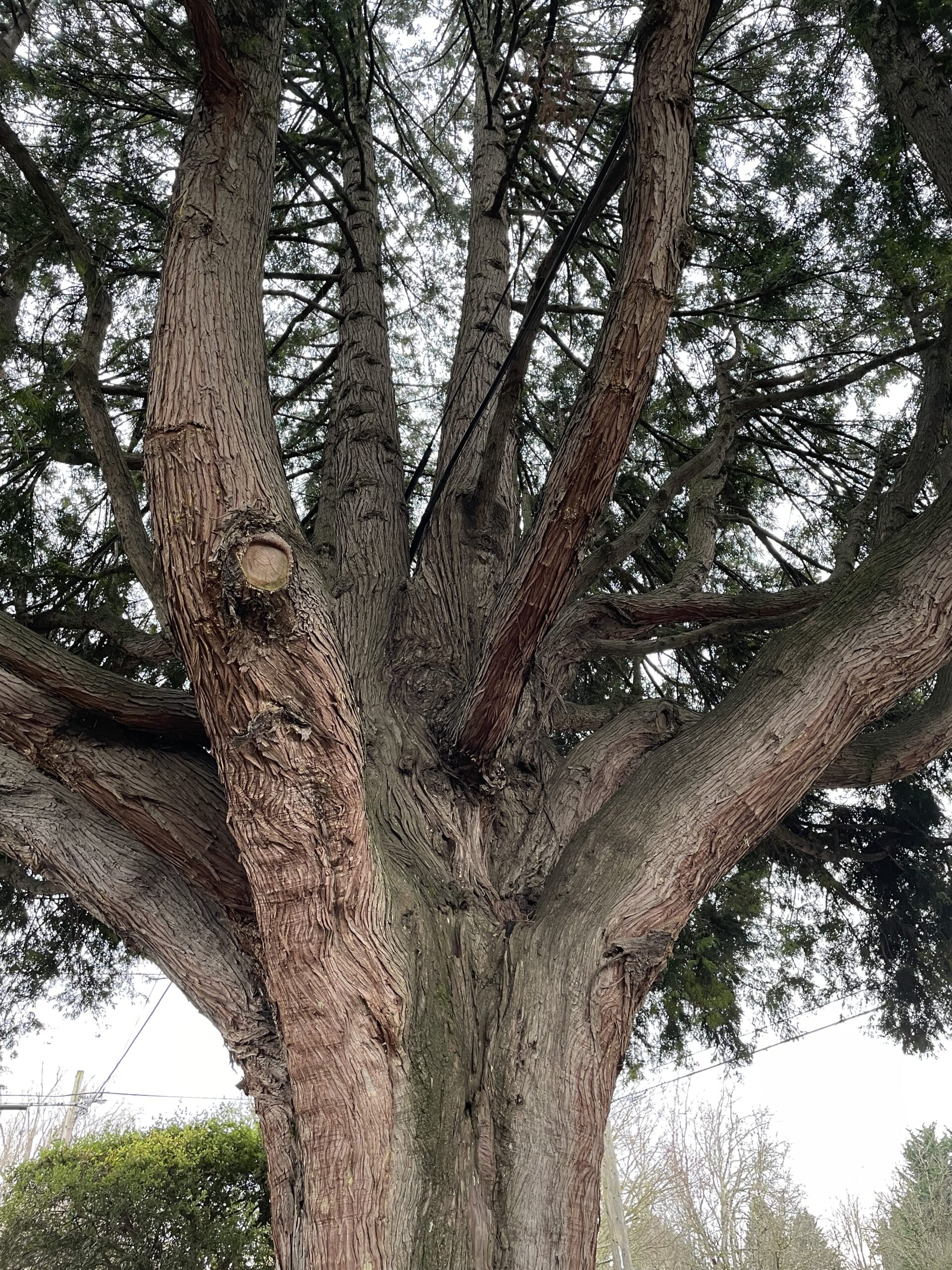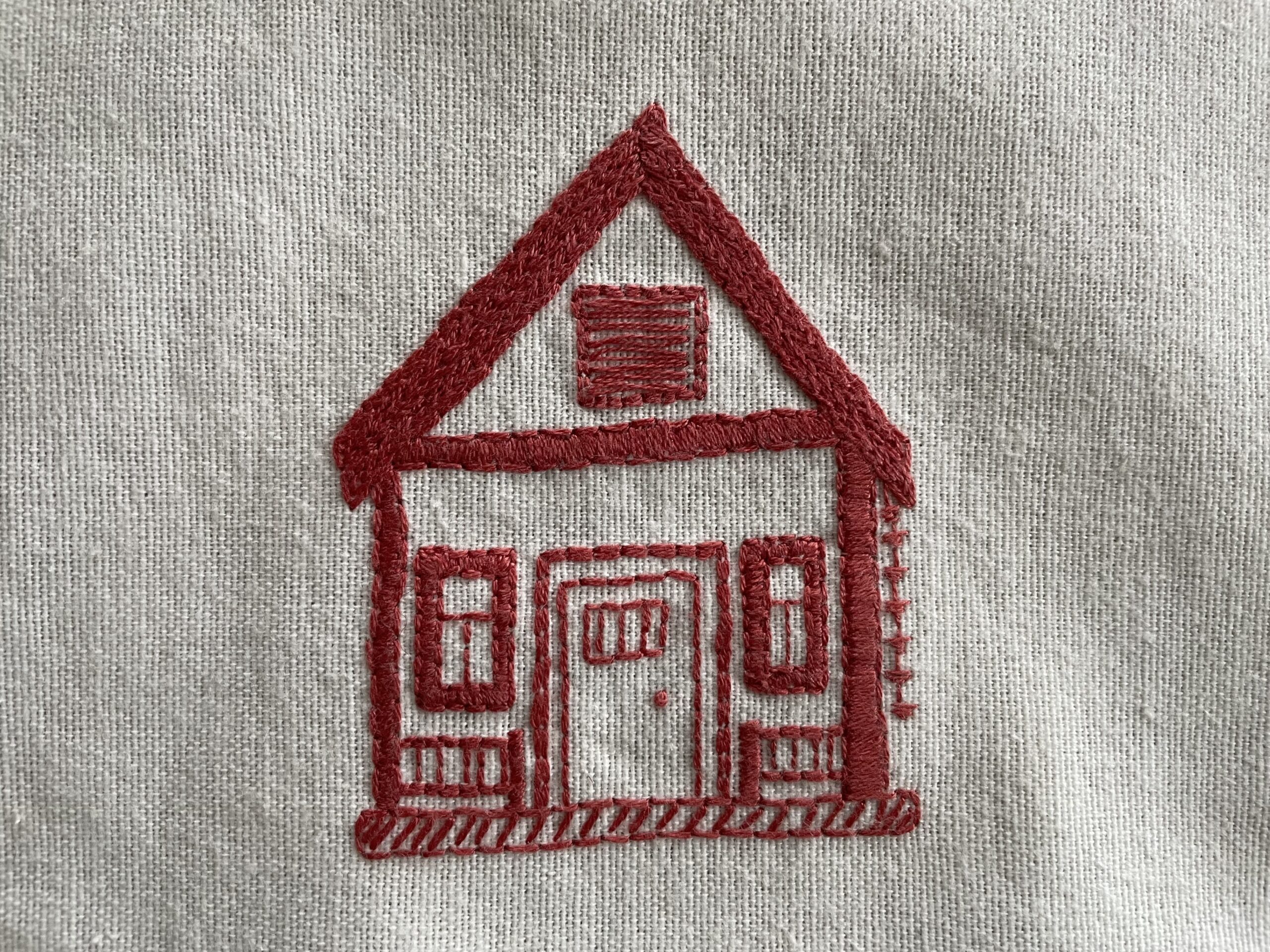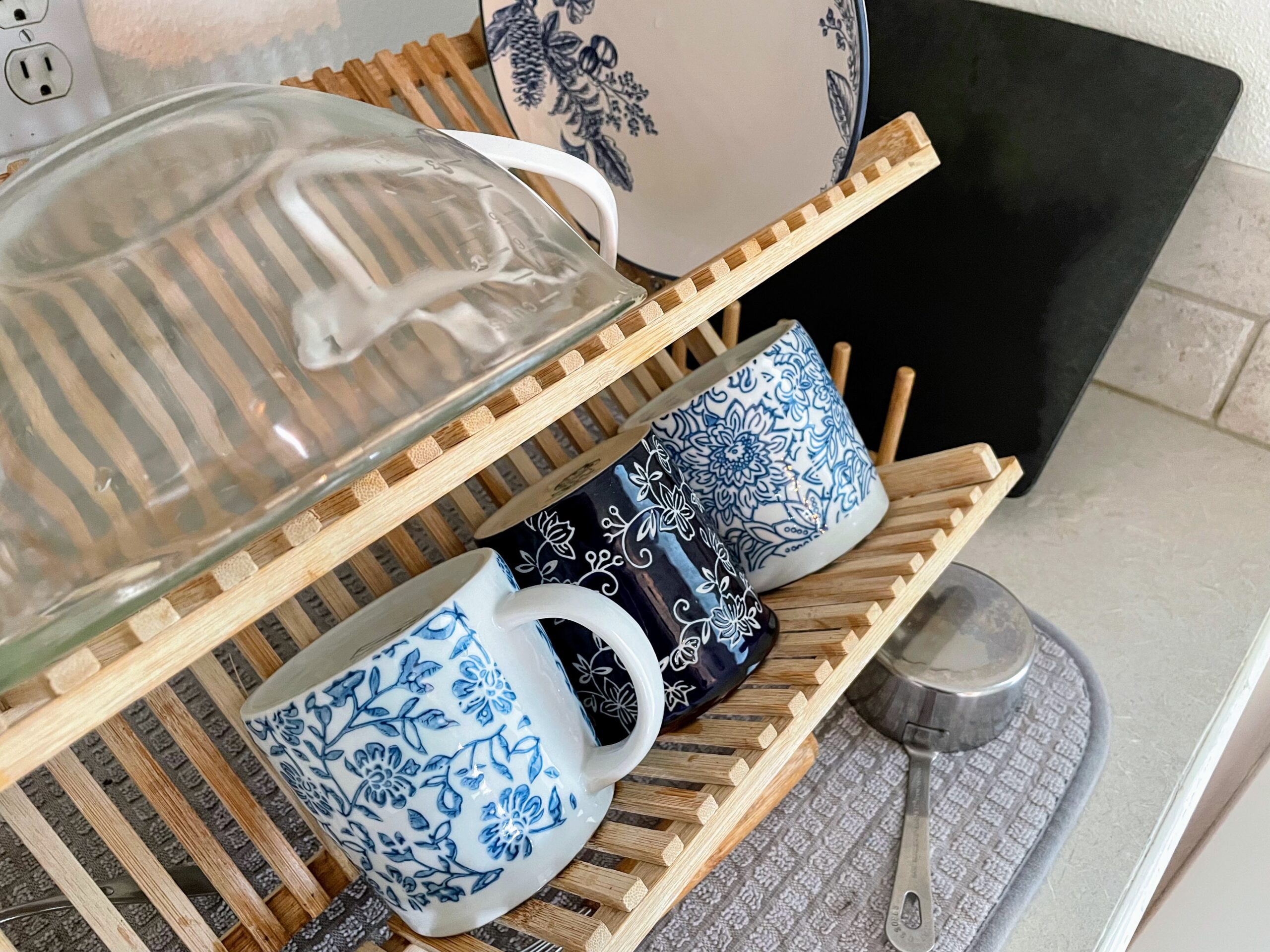Saturday morning Mel posted a photo of her reading pile, which got me to Googling one of the books in it, and I learned that it was written by Brooke McAlary–a name I thought I recognized. Turns out Brooke is a writer I used to follow long ago, when I was writing a different blog and she was just starting hers. It was in the early 20teens, before Pinterest, Instagram, podcasting, etc. ad nauseum left old school blogging (what we do around these parts) in the dust.
I stopped following when the blog became more of a commercial enterprise than a personal journal, but Saturday I stopped by her site to see if she still writes a blog, and yes, she does. I poked around in it a bit, and was especially pleased with this post, which reminded me more clearly about both why I originally followed (a strong writer exploring issues I care about) and why I eventually stopped. Brooke writes about going back to look at old posts she’d written and finding that most of them “just felt… small. Like returning to my primary school as an adult. What once felt big and unwieldy and hard to navigate simply felt outgrown.”
Boy, can I relate to that.
As I know has been true for so many of us, the last few years have brought profound shifts in how I see and understand the world and my place in it. I am still working to find some sure footing on what feels like unsteady ground, and often, when I look back at the place I used to be, I feel some feelings that could easily turn into shame.
Why didn’t I see…
Why didn’t I understand…
How could I have said…
Why did I…
Brooke seems to be coming back to writing after an extended absence brought on by a health challenge–something I can very much relate to–and I especially appreciated these words of hers, about looking back at her earlier writing and feeling some cringe:
“To allow ourselves to grow and change is such a gift. I wish I did it earlier. And while this is not the day to dig into this thought, I think self-compassion might be one of the biggest gifts I’ve received from spending much of the past couple of years being unwell. I’ve had to let so much unravel. And it’s in the putting back together that I can really question what old stories to bring with me, and which ones get left behind.”
And then I went looking for another writer I used to follow, and I must’ve gone a few other places, and somewhere along the way I found a simple list-ish way of giving a quick update on the week that is much like Kate’s lists of -ings that she regularly shares. Even though I have a million tabs open (per usual) I somehow lost that particular breadcrumb in my morning ramblings through the Internet forest. It was a simple, short list of -ings that I wanted to copy here.
I wanted to use it because I like connecting with others here regularly, but I’m just not in a place to write much these days. I had a good week–a really good one–but I seem to be in a fallow time when it comes to writing. My days have been full of PT exercises, skating, and mundane homemaking. That’s the surface of them, anyway. Under the surface, lots of shifting and dot-connecting that I don’t feel ready/able to write much about.
So, here’s my modified, from-memory list:
Listening…to The Love Songs of W. E. B. du Bois by Honoree Fanonne Jeffers. I wish I had the print version of this book because it moves around in time and there are so many characters; sometimes I wish I could turn back to an earlier part of the book to remind myself of what came before. But: the narration is so good. The book is big, painful, beautiful, and beautifully written. Jeffers is a poet, and it shows. I can’t remember if an audiobook has ever brought me to tears, but this one did this week. I’ve also been listening to the Lori McKenna mix on Spotify.
Reading…A Headache in the Pelvis by David Wise Ph.D., Rodney Anderson M.D. This was recommended by someone, somewhere in my chronic pain journey, and its explanation of pelvic pain is helping me connect the dots of all my various kinds of pain and their root causes. After years of feeling hopeless and maybe crazy, this book–along with several other key things over the past few months–has me feeling hopeful and seen. I can’t express yet what that means.
Feeling…joy in my pain-full body. I skated 4 of 5 days last week after a break over the holiday, and it felt so good to move that way. To feel how much I had missed it. On the ice, I feel strong and joyful and free. No longer having the body that I had when I was a child, I can’t skate as I did then, but I can still feel in my body some of the ways I once did–and it’s such an unexpected gift. I can’t stop marveling over it. (Trying to tell my physical therapist about it brought me to unexpected tears this week, too.)
Planning…to paint our second bathroom. In early February, my daughter will be visiting her husband in Sweden for an extended stay, and that seems like a good opportunity to paint our second bathroom. It’s a room that’s never gotten much love, but it could use some. OK, a lot. I truly dislike the floor tiles (they don’t fit with the rest of the house and always look dirty, no matter how much or with what I scrub at them), but we’re going to work with them. Maybe a different paint color will transform them. It could happen.
Wondering…what it means to be a poet (or anything, really). In the context of a conversation this week, a co-worker of my daughter’s said to me, “You’re a poet, right?” and I wasn’t sure of how to respond. Later, she and I debated my answer to the question. Since I rarely write poetry now, I don’t really think of myself as a poet. She says that, since I have written and am still capable of writing poetry, I am one. Which has me thinking about the labels we attach to ourselves and how we use them. Am I still a teacher? What about a librarian? Am I still a grand-daughter, even though I have no living grandparents? Was I a skater all those years (45!) I didn’t skate? If I’m not the things I used to be, what am I now? (Is this a question we need/get to keep answering until we die?)
Trying…a new way to keep the house clean. We have 6 rooms/zones that are regularly used. That’s one per day, with a 7th day to rest. It’s only been a week, and I haven’t been perfect in this, but so far I like it.
Making…a Sunday dinner habit. Or tradition. Or ritual. Something. We began having nice Sunday dinners in the lead-up to Christmas, a Swedish advent tradition that we adopted. When advent ended, we didn’t want to dinners to. It’s the one night a week that Cane, Grace, and I are all together around the table. Tonight, we’ll be having Ditalini with Chickpeas and Rosemary-Garlic Oil, by candlelight. If the dinners don’t have to end, the candlelight doesn’t, either.
Taking…photos of things that please or interest me. From this week’s camera roll:



Hoping you all have a good week. I’d love to hear about your -ings, whatever they may be.


























